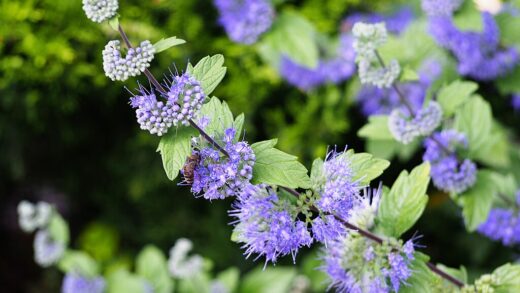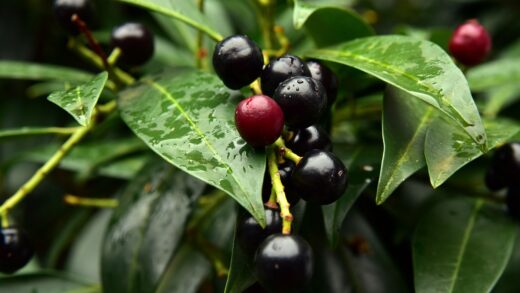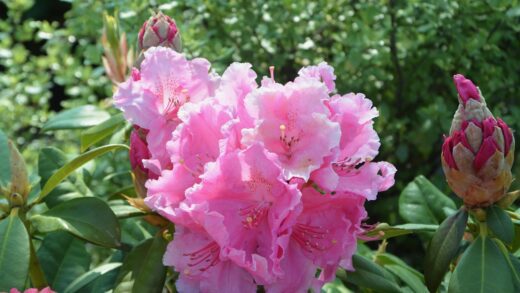Understanding the intricate relationship between the gardenia and water is fundamental to its successful cultivation. This is a plant that demands a delicate balance, a consistent level of moisture at its roots without ever succumbing to the dangers of waterlogged soil. The act of watering a gardenia transcends simple routine; it is a responsive practice that requires observation of the plant, the soil, and the surrounding environment. Mastering the art of irrigation for this particular species means providing the life-sustaining hydration it needs to support its lush, glossy foliage and to produce its famously fragrant blossoms. Missteps in watering, whether too much or too little, are often the primary source of the most common gardenia health problems, making this a critical skill for any aspiring grower to develop.
The gardenia’s need for consistent moisture is a direct reflection of its origins in the warm, humid, and rainy subtropical regions of the world. In its native habitat, the soil is frequently replenished with rainfall, yet it is also typically well-draining, preventing the roots from sitting in stagnant water. Our goal in a garden or home setting is to mimic these natural conditions as closely as possible. This means avoiding the boom-and-bust cycle of letting the soil dry out completely and then flooding it. Such inconsistency can shock the plant’s system, leading to stress-related issues like yellowing leaves and the premature dropping of flower buds.
Proper irrigation technique is just as important as the frequency of watering. The way in which water is applied can significantly impact the health of the root system and the plant as a whole. A thorough, deep soaking that moistens the entire root ball is far more beneficial than a light, superficial sprinkle that only wets the top layer of soil. Shallow watering encourages the development of a weak, shallow root system that is more susceptible to drying out and less efficient at nutrient uptake. It is the deep, established roots that anchor the plant and provide the foundation for vigorous growth.
Ultimately, there is no single, universal watering schedule that works for every gardenia. The specific needs of your plant will vary depending on a multitude of factors, including the pot size, the type of soil mix, the ambient temperature, the humidity level, and the amount of light it receives. A gardenia in a small terracotta pot placed in a sunny window will dry out much faster than one in a large glazed ceramic pot in a shadier location. Therefore, the key is to learn to assess the plant’s individual needs by regularly checking the soil moisture, rather than watering based on a predetermined calendar schedule.
The principle of consistent moisture
The core philosophy behind watering a gardenia is maintaining consistent moisture. This concept can be challenging because it occupies the narrow, ideal space between being too dry and too wet. The soil should feel like a well-wrung-out sponge – damp to the touch, but not saturated or dripping. Allowing the soil to become bone dry is extremely stressful for the plant, often causing the fine, delicate feeder roots to die back. This damage to the root system impairs the plant’s ability to absorb water and nutrients even after it is watered again, leading to wilting and leaf drop.
More articles on this topic
Conversely, the dangers of overwatering are equally, if not more, severe. When the soil is constantly saturated, the air pockets within the soil become filled with water. Plant roots require oxygen to function properly, a process known as respiration. In waterlogged soil, the roots are deprived of oxygen and can essentially drown. This creates an anaerobic environment that is a perfect breeding ground for pathogenic fungi and bacteria, leading to the devastating condition known as root rot. Once root rot sets in, it is very difficult to reverse and often proves fatal to the plant.
To achieve this desired consistency, the most reliable method is to manually check the soil before each watering. Instead of watering on a rigid schedule like “once a week,” make it a habit to insert your finger into the soil up to the first or second knuckle. If the soil at that depth feels dry, it is time to water. If it still feels moist, it is best to wait another day or two and check again. This simple, tactile method accounts for daily fluctuations in temperature and humidity and prevents both underwatering and overwatering.
For container-grown gardenias, the type of pot can influence how consistently moist the soil remains. Porous materials like terracotta allow moisture to evaporate through the sides, causing the soil to dry out more quickly. Non-porous materials such as plastic or glazed ceramic retain moisture for longer periods. Understanding the properties of your container is an important part of developing a successful watering routine. Regardless of the material, ensuring the pot has adequate drainage holes is absolutely non-negotiable for preventing water from pooling at the bottom and causing root problems.
Proper watering techniques
When it is time to water your gardenia, the technique you use is crucial for ensuring the health of the entire root system. The best practice is to water thoroughly and deeply. Apply water slowly and evenly to the soil surface until it begins to drain freely from the bottom of the pot. This method ensures that the entire volume of soil, from top to bottom, is uniformly moistened. It encourages the roots to grow deep into the pot in search of water, creating a stronger and more resilient root system. Continue watering until about 10-15% of the water has passed through the drainage holes.
More articles on this topic
After a thorough watering, it is critically important to address the excess water that has collected in the saucer or tray beneath the pot. Never allow the gardenia to sit in standing water for an extended period. This is tantamount to creating the waterlogged conditions you are trying to avoid in the pot itself. The plant’s roots can wick this excess water back up, leading to oversaturation and increasing the risk of root rot. Approximately 15 to 30 minutes after watering, make sure to empty the saucer completely.
The time of day you water can also make a difference, particularly for outdoor plants. It is generally best to water in the early morning. This gives the plant the hydration it needs to face the heat and light of the day. Watering in the morning also allows any moisture that may have splashed onto the leaves to evaporate quickly in the sun, which helps to prevent the development of fungal diseases. Watering in the late evening can sometimes be problematic as the foliage may stay wet overnight, creating a more hospitable environment for pathogens.
When watering, try to apply the water directly to the soil at the base of the plant, avoiding the leaves and flowers as much as possible. While gardenias appreciate high humidity in the air, consistently wet foliage can encourage fungal problems like powdery mildew or leaf spot. Using a watering can with a long, narrow spout allows you to target the soil precisely. This practice is especially important for indoor plants where air circulation may be less than ideal.
Water quality considerations
The type of water you use for your gardenia can have a profound long-term impact on its health, primarily due to the plant’s sensitivity to soil pH. Gardenias are acid-loving plants and can be negatively affected by the mineral content found in many municipal water supplies. Tap water is often treated to be slightly alkaline and can contain high levels of calcium and magnesium, which are collectively known as “hardness.” Over time, the repeated application of hard, alkaline water can gradually raise the pH of the potting soil.
As the soil pH rises above the ideal range of 5.0 to 6.5, the gardenia’s ability to absorb essential micronutrients, especially iron, becomes severely restricted. This leads to iron chlorosis, a condition characterized by the yellowing of new leaves between the green veins. To avoid this problem, the best possible water sources are naturally acidic and low in minerals, such as rainwater or melted snow. Collecting rainwater is an excellent and sustainable practice for any gardenia enthusiast. Distilled water or water processed through a reverse osmosis system are also great alternatives.
If you must use tap water, there are a few steps you can take to mitigate its negative effects. Allowing tap water to sit in an open container for at least 24 hours can help some of the chlorine to dissipate, which is beneficial. However, this will not reduce its hardness or alkalinity. To counteract the alkalinity, you can acidify your tap water periodically. This can be done by adding a small amount of white vinegar (about one tablespoon per gallon of water) or citric acid to your watering can once a month. This practice helps to maintain the low soil pH that gardenias crave.
It is also important to be mindful of water temperature. Gardenias can be shocked by water that is either too cold or too hot. Using water that is at room temperature is the safest option. Cold water can chill the root system, inhibiting its function and stressing the plant, which may contribute to issues like bud drop. Therefore, if you are using tap water, it is a good practice to fill your watering can and allow the water to sit until it reaches the ambient temperature of the room before applying it to your plant.
Adjusting for seasons and conditions
A gardenia’s water needs are not static; they fluctuate significantly with the changing seasons and the plant’s own growth cycles. During the active growing season of spring and summer, when the plant is producing new leaves and flowers, its water consumption is at its peak. The longer daylight hours and warmer temperatures cause more moisture to be lost through transpiration, so you will likely need to water more frequently. It is during this period that maintaining consistent soil moisture is most critical for supporting vigorous growth and prolific blooming.
In contrast, during the autumn and winter months, the gardenia enters a period of rest or semi-dormancy. The days are shorter, the light intensity is lower, and growth slows down dramatically. As a result, the plant’s water requirements are significantly reduced. It is a common and fatal mistake to continue watering with the same frequency as in the summer. During this dormant period, you should allow the soil to dry out more between waterings. Check the soil, and only water when the top two inches feel dry to the touch. Reducing watering frequency is essential for preventing root rot during the winter.
Environmental conditions also play a huge role in determining how often you need to water. A gardenia placed in a hot, dry, and sunny location will require much more frequent watering than one in a cool, humid spot with less light. The size of the plant relative to its pot is another factor; a large, well-established plant in a small pot will exhaust the water in the soil very quickly. On the other hand, a small plant in an overly large pot is at high risk of being overwatered, as the large volume of soil will stay wet for a long time.
Pay close attention to the plant’s signals. While you should not wait for the plant to wilt before watering, drooping leaves can be a clear sign of thirst. However, it is important to note that wilting can also be a symptom of overwatering and root rot, as the damaged roots are unable to supply water to the leaves. This is why it is always essential to check the soil moisture with your finger before reaching for the watering can. Learning to interpret the plant’s signals in conjunction with feeling the soil is the most reliable way to provide the perfect amount of water at all times.


















